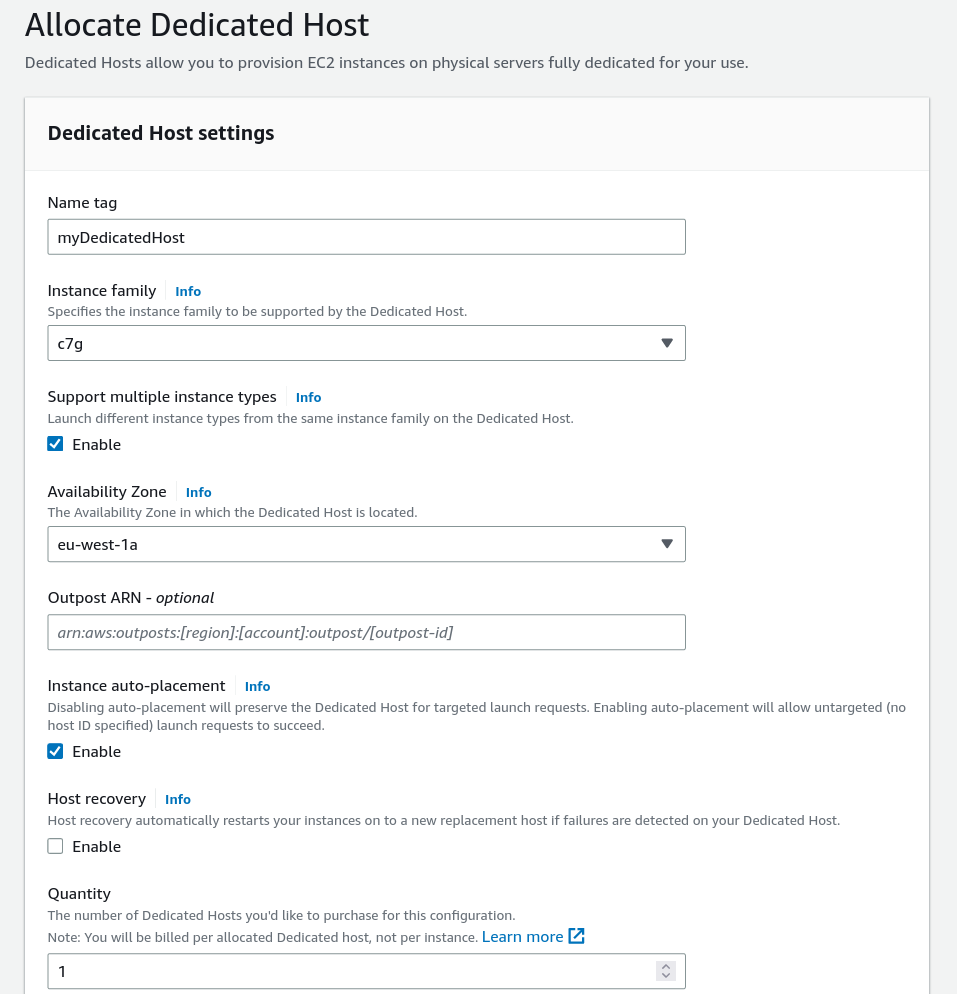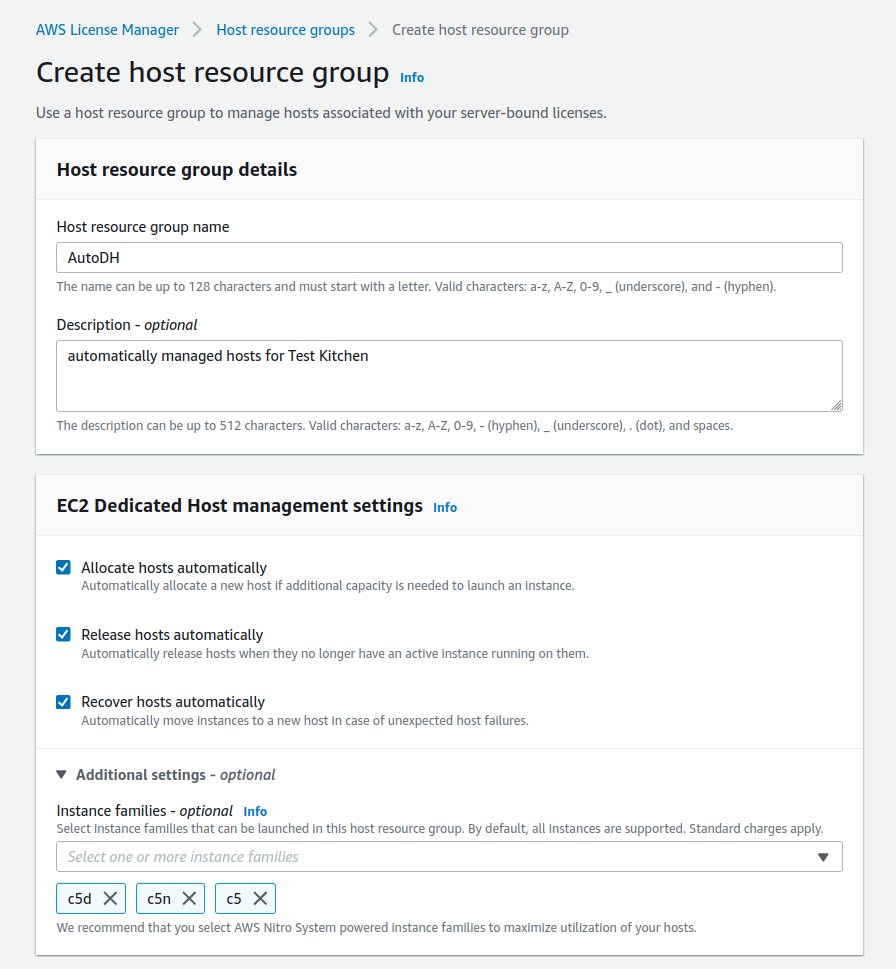Dedicated Hosts with Test Kitchen
Sometimes, you need to deploy software for tests with special licensing terms. To solve this, AWS offers Dedicated Instances and Dedicated Hosts - and now you can use them with Test Kitchen 3.14 in your developer workflows.
Why Dedicated Hosts
While there are several reasons to use dedicated hosts, most are related to licensing terms. Some software vendors only issue licenses to be used on single-tenant systems. Others even require you to license all hosts where their software could run, not only those which do.
As a Dedicated Host (DH) is only available for your company and will never run instances from other customers, this fills those requirements. Licensing can be touchy, so please ask your license manager or software vendor if you have conditions like these.
Another reason is security-related: Theoretically, there could be bugs in the base hypervisor, which allow attackers to break out of an instance and then access other machines on the same hardware. While these cases are scarce, very sensitive data might be required to be run on dedicated machines.
Why not Dedicated Instances
Dedicated Instances can solve this issue. Their use cases are very similar to Dedicated Hosts while being much cheaper, but they might not fulfill vendor-specific licensing requirements.
It is easy to use them with Test Kitchen, as it is just a matter of defining tenancy: dedicated in your kitchen.yml, and it will work out of the box. Please look into the AWS pricing pages to get more information on the additional costs.
This setting has been available since version 1.3.0 of Test Kitchen
Dedicated Hosts Basics
In contrast to regular or Dedicated Instances, using Dedicated Hosts will require an additional step: Allocation of a host. This is a separate action in the web console or CLI/SDK, which needs ec2:AllocateHosts privileges.
You decide which type of instances you want (a DH will only support one specific family), which Availability Zone to pick, and if it is available for automatic use with corresponding instances.

For our purposes in Test Kitchen, please remember to select auto-placement as it is not yet possible to address a specific task in the driver.
After the host gets provisioned within seconds, you can use it to place new instances on it until it is at capacity. At that point, you either have to stop other instances or need more hosts.
Remember to deallocate unnecessary hosts quickly to avoid paying for unused capacity. And notice that t3 Dedicated Hosts are much more expensive in this case1.
Lifecycle
As you can see, the additional lifecycle management of DHs can be challenging.
You can manually allocate and deallocate hosts but risk having unused ones running too long without being noticed.
The kitchen-ec2 driver can manage this overhead if you enable it. Both the allocate_dedicated_hosts and deallocate_dedicated_hosts settings are available to make granular changes, depending on if you work locally (set both to true), if you use this in a CI/CD system (likely allocate, but do deallocation on a schedule), or if you have some exceptional circumstances (like mac hosts)
On the AWS side, a little hidden gem is under the “AWS License Manager” service, where you can use the built-in Host Resource Groups feature.

This feature automatically allocates new hosts if additional capacity is needed or deallocates empty hosts.
But there is a caveat: It does not support all instance types but only a subset.
Using it with Test Kitchen
To use this, you need to update the driver properties in your kitchen.yml as a top-level setting or as a more specific configuration under platforms.
The first property is tenancy, which usually is default - so it will allocate on-demand instances. You can set this to dedicated, which means Dedicated Instances, or to host.
If you use host, you should either use one of the external lifecycle management systems described above, or you need to set the allocate_dedicated_hosts setting to true.
Likewise, you might want to use the deallocation feature via deallocate_dedicated_hosts as true.
Notice that you need to specify the availability-zone attribute, or the AWS API will not know where to place the new host.
Finally, the following is a snippet for a working Dedicated Hosts configuration with Test Kitchen:
driver:
allocate_dedicated_host: true
deallocate_dedicated_host: true
instances:
- name: ubuntu-20.04
driver:
availability-zone: eu-west-1
tenancy: host
